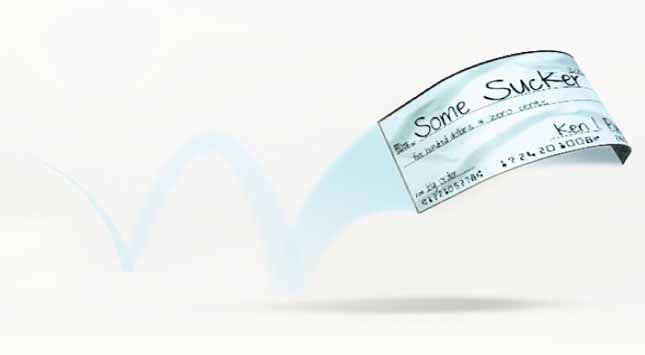Your main job as a business owner is to protect your bottom line and to prevent losses as much as possible, and one possible source of loss is when a client’s check bounces. When this happens, it is very frustrating and it shows your business in a bad light.
While you might be tempted to suggest possible measures to prevent this in the future such as telling the customer to get custom checks printed online if the bounce happened due to a writing mistake.
However, you might come off as unnecessarily aggressive or even condescending to the customer, which may prevent you from getting future orders.
If you receive a check that bounces from a client, here is a good way to handle it.
Give Them the Benefit of the Doubt, At First
When you first receive a bad check from your client, your first reaction shouldn’t be to assume that they are trying to rip you off! They are human too, and sending you a bad check might have just been an honest mistake.
If this is the case, a simple call should be all it takes for the problem to be rectified. The person will realize that they sent you a bad check, and they will immediately find a way to fix the situation either by sending you a new check or even by going to their bank and personally paying you the amount due.
If you give your customers the benefit of the doubt and it was an honest mistake, they will appreciate the fact that you did not jump to conclusions.
Send Them a Certified Notice
After you’ve tried to follow up with the client to try and fix the bad check without any response, your next move should be to send them a certified notice. Sending them a formal letter will leave a paper trail that will prove that you went through the proper channels in trying to fix the situation.
The laws covering bad checks will vary depending on where you live. You need to check your state’s laws on how you should properly contact your client. These laws will cover every aspect of your motion to try and get your money, from the proper time period that your client should respond, to how to write your notice properly.
Following these steps according to state law will make your case stronger, should further legal action be needed.
Contact Them Personally
After sending them a certified notice and you still have not heard back from them, you can further strengthen your case by trying to contact the client personally once more. After all, it’s easy for the client to argue that they never received your notice in the mail, but when you record your efforts to try and contact them personally either through a phone call, email, or even personally visiting their place of work, it would be harder to refute your efforts to contact them.
Get Help from the Boys in Blue
If you live in the same geographical location as your client that falls under single police jurisdiction, you can consider asking help from local law enforcement. In many cases, even the idea of getting the police involved will be enough to make a client make good on their due payments.
You need to personally go to the police department and file a complaint. Bring all the relevant documents with you, particularly a copy of the bounced check, as well as copies of all the efforts on your part to contact the client.
Take the Person to Court
Depending on the amount owed to you, you can also take your client to small claims court. As with state laws covering bad checks, the amount covered by small claims court will vary from state to state. You need to check with your local state laws to see whether the amount still falls under the jurisdiction of small claims court, or whether you need to elevate your claim to your regional court.
In most states, the amount that you can recover through small claims court will cover debts up to $10,000.
Ask a Lien on Their Assets
Once the court has ruled in your favor, they will compel the client to pay the debt. However, if the client is unable or unwilling to pay the debt and any damages as ordered by the court, you can return and file a secondary claim against the client.
In general, the court will then place a lien on their assets (usually property), or garnish the client’s wages in order to settle your claim.

